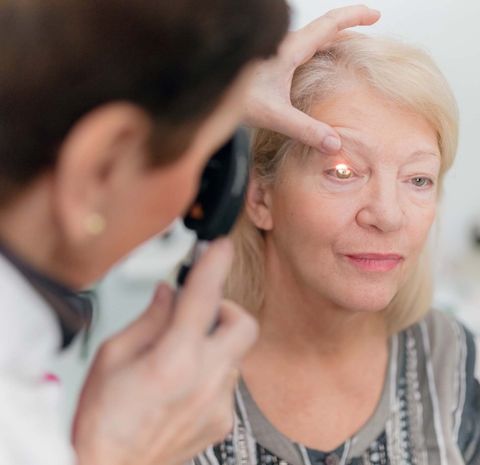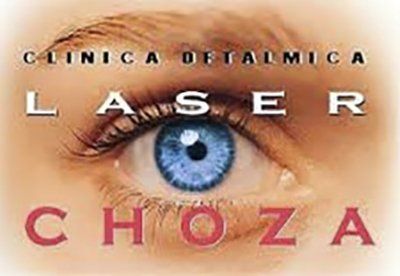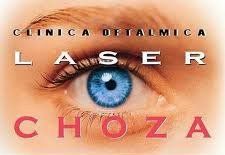Cataract Surgery
Cataract Surgery in Guadalajara
Cataract Surgery
It's a surgery to remove an opaque lens (cataract) from the eye. Cataracts are eliminated to help to see better. This procedure almost always includes the placement of an artificial lens or intraocular lens (IOL) in the eye.
Phacoemulsification: with this procedure, the doctor uses an instrument that produces sound waves to break the cataract into small fragments, which are then removed by suction. In this procedure a very small incision is made.
Extracapsular extraction: the doctor uses a small instrument to extract the cataract almost
always in one piece.
Phacoemulsification: with this procedure, the doctor uses an instrument that produces sound waves to break the cataract into small fragments, which are then removed by suction. In this procedure a very small incision is made.
Extracapsular extraction: the doctor uses a small instrument to extract the cataract almost
always in one piece.

Laser surgery:
Cataract surgery in Guadalajara, the doctor uses a machine that uses laser energy to make the incisions and soften the cataract, which is then usually removed by suction. The use of laser instead of a scalpel can accelerate recovery and be more accurate. After the cataract is removed, an artificial lens, called an intraocular lens (IOL), is usually placed to help improve vision. The doctor then closes the incision with very small sutures. Sometimes a self-sealing method (without sutures) is used. If sutures are used, it may be necessary to remove them afterwards.
The surgery lasts less than half an hour. Most of the time, it is only done in one eye. If you have cataracts in both eyes, your doctor may suggest that you wait one to two weeks between each surgery.
Why the procedure is enhanced
The normal lens of the eye is transparent (clear). As a cataract develops, the lens becomes opaque and blocks the entrance of light to the eye; hence, without enough light you can't see clearly. Cataracts are painless and can be seen mostly in the elderly. However, sometimes children are born with them. Cataract surgery is usually done if you can't see well because of them. Cataracts usually will not damage the eye, so your ophthalmologist and you can decide if the surgery is the answer.
Before the procedure
Before surgery, our group of ophthalmologists will perform a complete eye exam. The doctor will use a laser or ultrasound scanning device to measure the eye. These tests help determine the best intraocular lens for you. If the doctor prescribes ophthalmic drops before surgery, it's very important to follow the instructions carefully.
After the procedure
Before returning home, you may receive the following:
- A patch to use over the eye until the control exam
- Ophthalmic drops to prevent infections, treat inflammation and help with healing. It will be necessary to have someone to take you home after surgery. You will probably have a follow-up exam with the doctor the next day
If you received sutures, you will need an appointment to have them removed.
Tips for recovery after cataract surgery
- Wear dark glasses outside after removing the patch.
- Wash your hands thoroughly before and after using the eye drops and touching the eye.
- Try not to get soap or water in your eye when you are taking a bath or showering during the first few days.
Expectations (prognosis)
Most patients have a good prognosis and recover quickly from cataract surgery.
It is a condition in which the lens of the eye loses its ability to focus by the natural advance of the years; It usually occurs in patients who have reached the age of 40. This makes it difficult to see nearby objects and the need to zoom out as far as possible to focus.
Causes
The lens needs to change its length or shape to focus on objects that are nearby. The ability of the lens to change shape is called the lens's elasticity, which is slowly lost as people get older. The result is a slow loss of the eye's ability to focus on nearby objects. People generally begin to notice this condition around the age of 45, when they realize that they need to hold reading materials at a greater distance in order to focus on them. Presbyopia is a natural part of the aging process and affects all people.
symptom
• Decreased ability to focus on nearby objects
• Eye fatigue.
• Headache
• Tests and exams
The doctor will perform a general evaluation of the eyes. This includes measurements for
determine the prescription of glasses or contact lenses.
Exams may include:
- Retinal examination
- Muscle integrity test
- Refraction test
- Examination with lamp of hen di dura
- Visual acuity
- Treatment
Previously it was believed that there was no cure for presbyopia, but new technologies have
demonstrated that a specialized laser surgery can fight the condition. Bifocal lenses are also widely used for far and near focus.
Extraction of Cataracts in Guadalajara Mexico
Laser Choza
We care about one of the most wonderful gifts of life: the gift of sight
Schedule Appointment
As far as my opinion about Dr. Laura Choza apart from being a great person is an excellent professional at her work, since she saved both corneas from transplants, among other complications that were generated,
Jose Alfredo R.
Two years ago, Dr. Laura operated on me, it was the best decision I could have taken, I recommend this clinic widely because it has very good care and equipment.
Martin
My daughter operated by Dr. Laura Choza, apart from her good treatment, very humanitarian
Mario Castillas Zavala
Contact
Gulf of Cortes 2980
North Vallarta
Guadalajara, Jalisco, ZIP 44690
PHONES:
01-800 581-3424
USA 01152 (33) 3616-3391
(33) 3615-2016
(33) 3615-2017
Copyright © 2019 Oftalmologist Guadalajara Mexico




